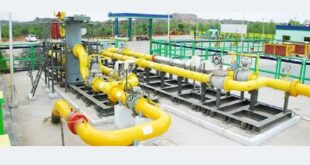Chile is keen to partner with India on tapping into the lithium value chain by extending technical expertise in exploiting the newly established “inferred” lithium resources of 5.9 million tonnes in Salal-Haimana area of Reasi district in Jammu and Kashmir.
Key details:
- The ‘inferred’ reserves of 5.9 mn tonnes in J&K’s Reasi are in mineral form unlike Chile’s salt pans.
- The term ‘inferred’ refers to the ‘preliminary exploration stage’, the second of a four-step process.
- Chile-based SQM, world’s largest producer of lithium, has a venture in Australia to tap lithium in mineral form.
- Chile has around 48 per cent of the total lithium reserves in the world, contained mostly in the Salar de Atacama, a large salt flat located in the country’s north.
India’s policy:
- In March 2019, the Memorandum of Understanding (MoU) between India and Chile on cooperation in geology and minerals was renewed for five years.
- In 2022, there were stepped up efforts by Khanij Bidesh India Limited (KABIL), a joint venture company, to source strategic minerals from countries like Australia, Argentina and Chile.
- KABIL is focusing on identifying and sourcing battery minerals like lithium and cobalt and engagement with a few companies is underway in Australia, Argentina and Chile.
- India currently imports all its lithium needs and is almost entirely dependent on inflows of these imported cells for domestic consumption.
Current prospects in J&K:
- The Geological Survey of India (GSI), an attached office of Ministry of Mines, carried out a G3 stage (fairly advanced) mineral exploration project in Salal-Haimna areas of Reasi district.
- It estimated an inferred resource of 5.9 million tonnes of lithium ore.
Significance of the find:
- India, which has mostly relied on imports for the mineral, now has hope with the finding of a large reserve.
- The fact that the majority of the global reserve is located in regions with severe water stress makes this discovery even more important.
- India is a potential replacement because the mineral requires a large amount of water for extraction and the majority of the reserves are in nations with water shortages.
- The discovery might mark the start of a new era for the entire world as well as India.
| What is lithium?
· Lithium is a soft, silvery-white alkali metal. · It is the least dense metal and the least dense solid element. · Like all alkali metals, lithium is highly reactive and flammable. · When cut, it exhibits a metallic luster, but moist air corrodes it quickly to a dull silvery gray, then black tarnish. · It never occurs freely in nature, but only compounds. · Due to its solubility as an ion, it is present in ocean water and is commonly obtained from brines. Uses: · It is mostly employed in the manufacturing of ceramics and glassware, greases, medicinal compounds, air conditioners, and aluminium, among other things. · Due to its maximum energy storage capacity per kilogramme it is an ideal option for electric vehicle manufacturers due to its enormous energy storage capacity and incredibly low weight. · It is used in batteries to power smartphones, laptops and other gadgets. · Lithium is an essential component in the rechargeable batteries that run electric vehicles (EVs) and in storage batteries for energy from renewable sources. · While lithium is also used in ceramics, in industrial grease, and in the pharmaceutical sector, its potential demand is expected to be largely driven by batteries. SOURCE: THE HINDU, THE ECONOMIC TIMES, PIB |
 Chinmaya IAS Academy – Current Affairs Chinmaya IAS Academy – Current Affairs
Chinmaya IAS Academy – Current Affairs Chinmaya IAS Academy – Current Affairs



